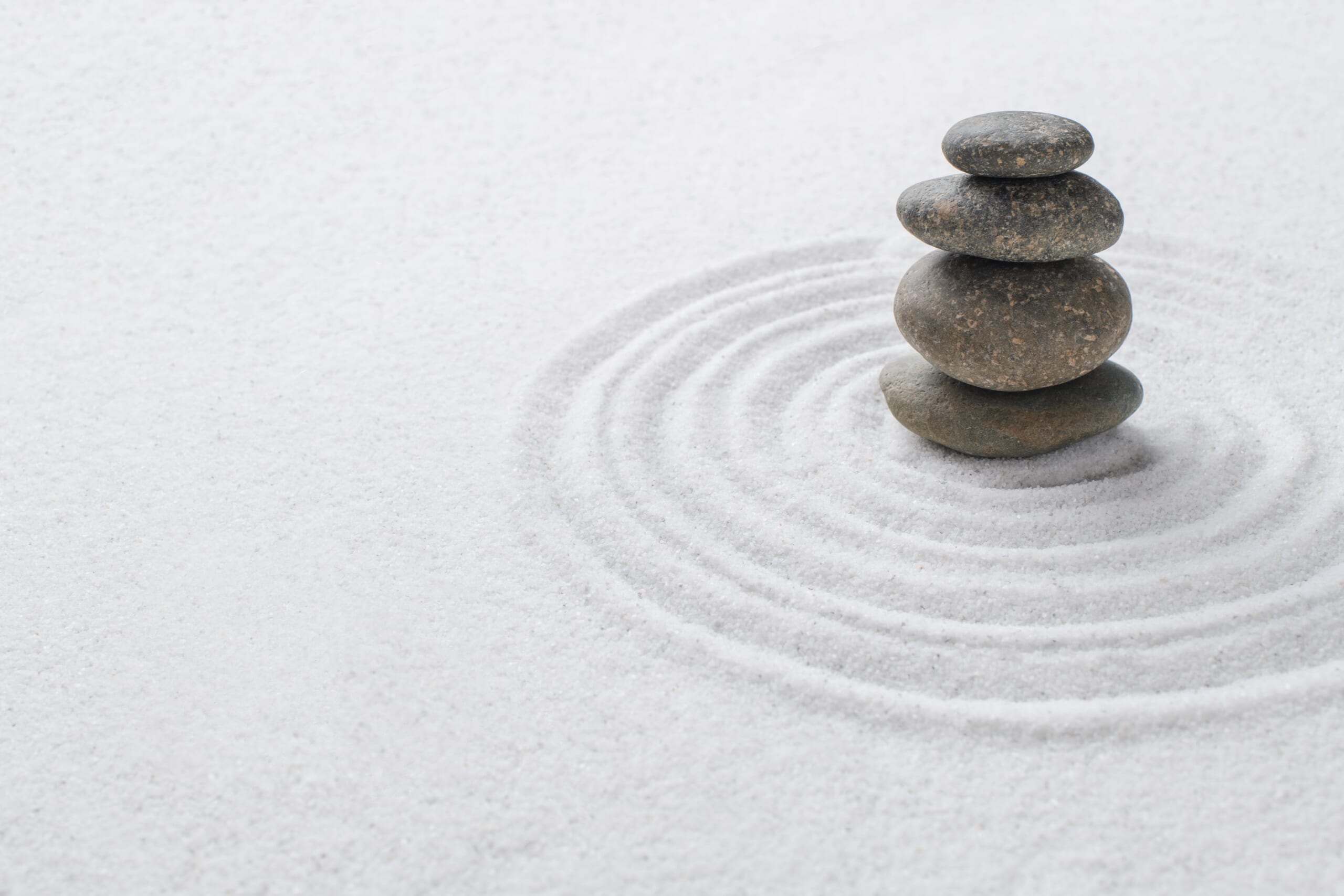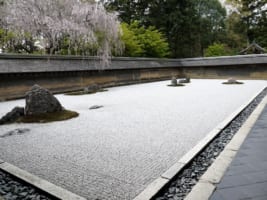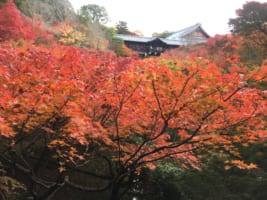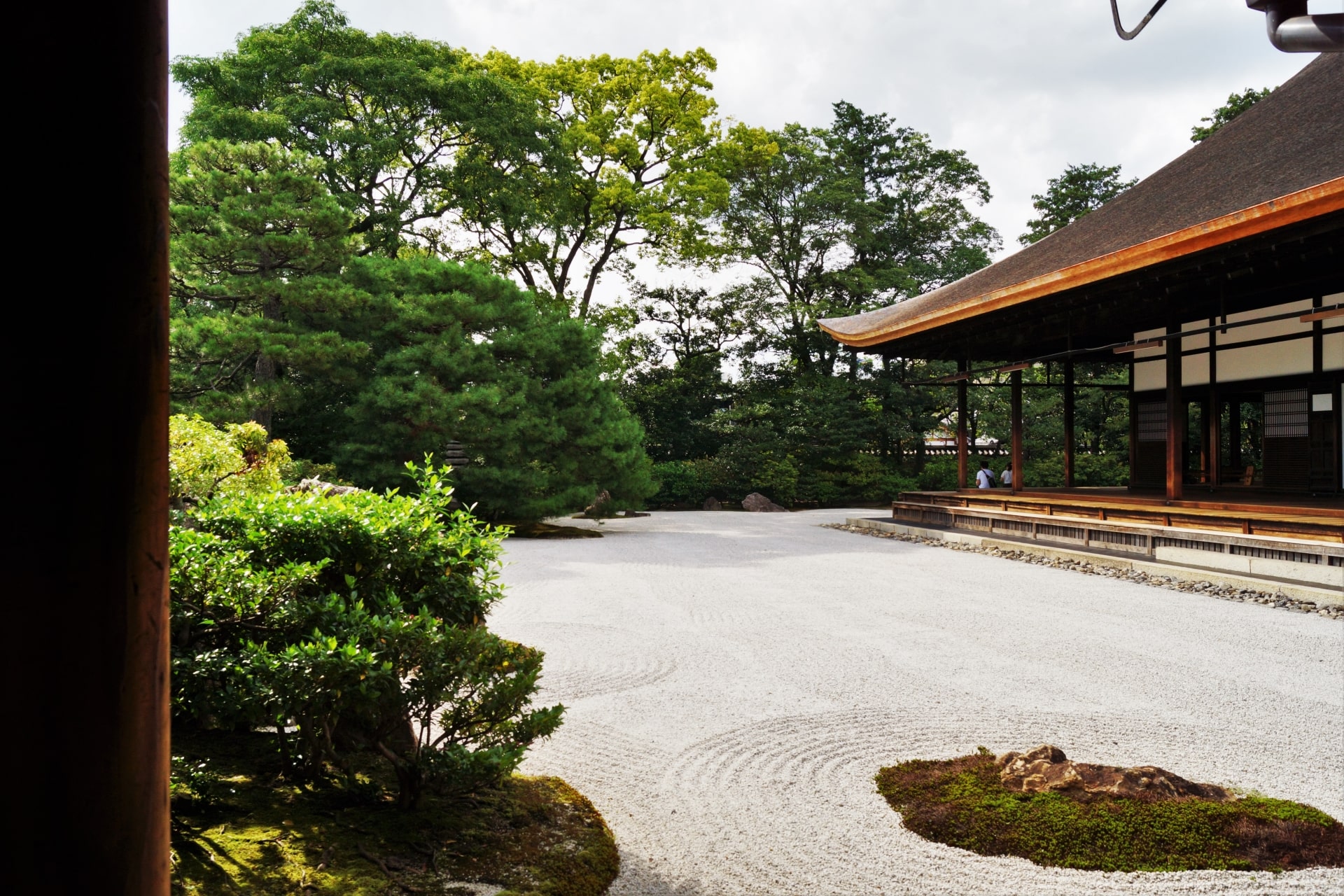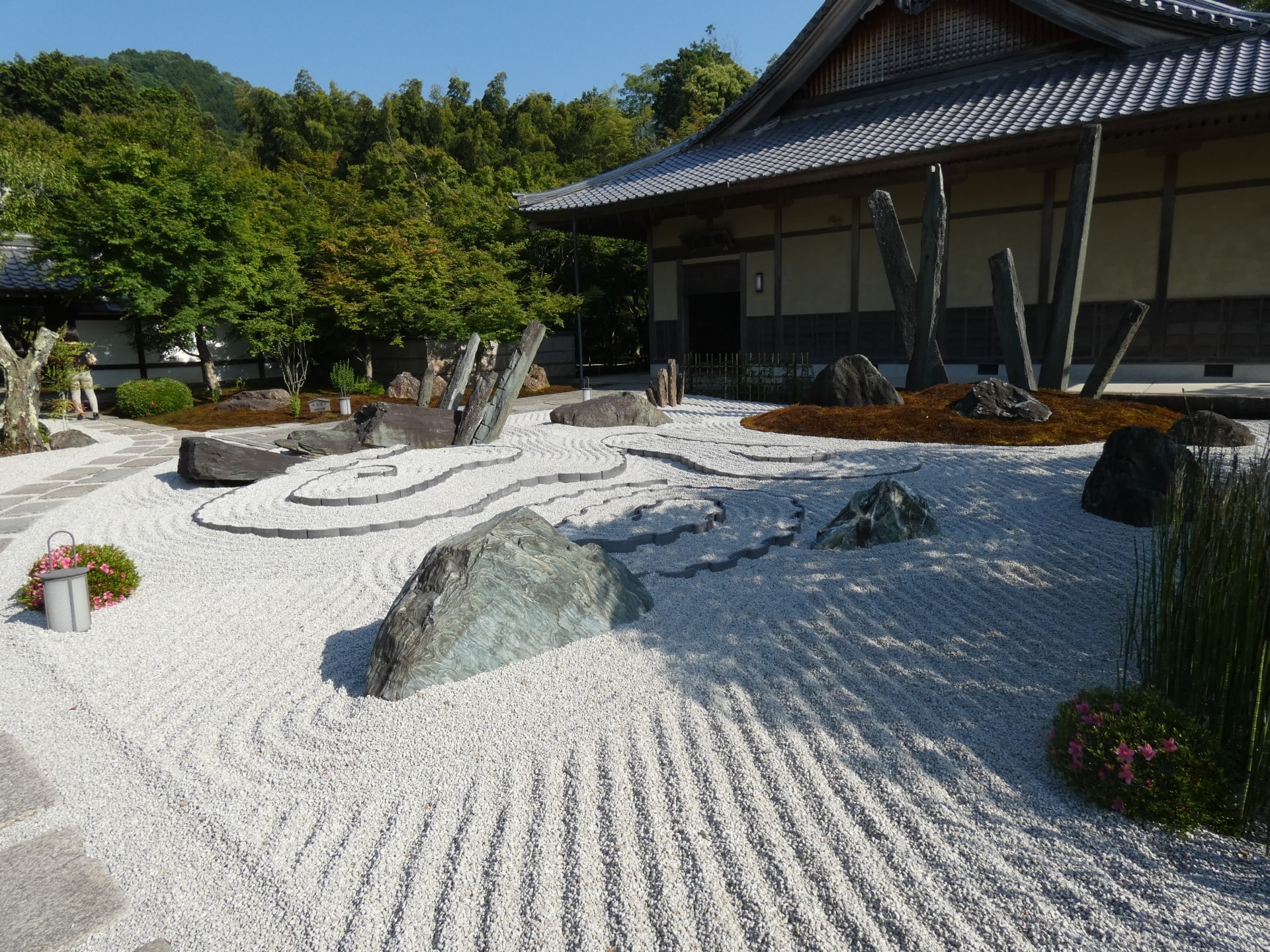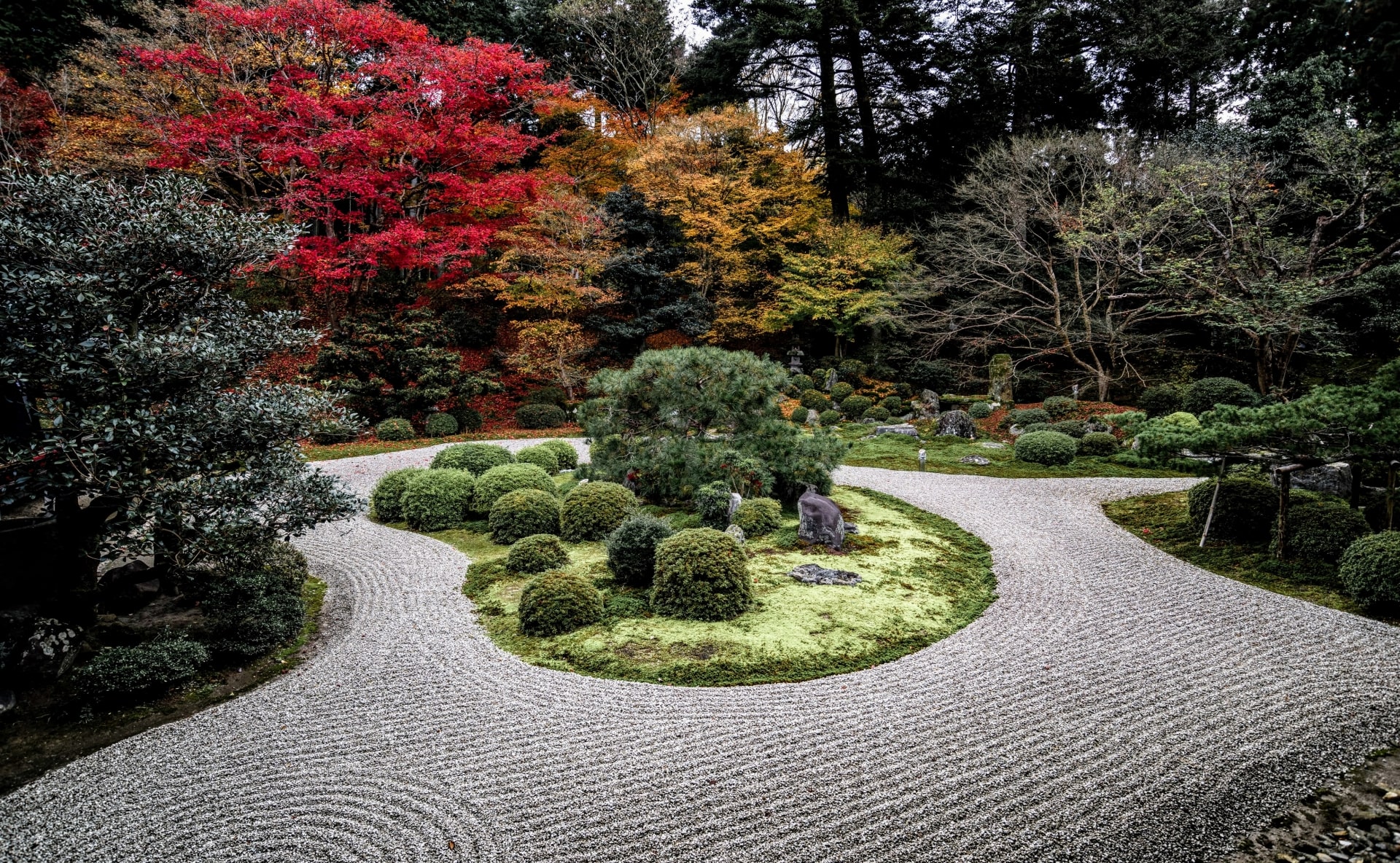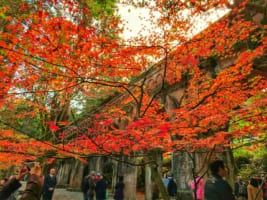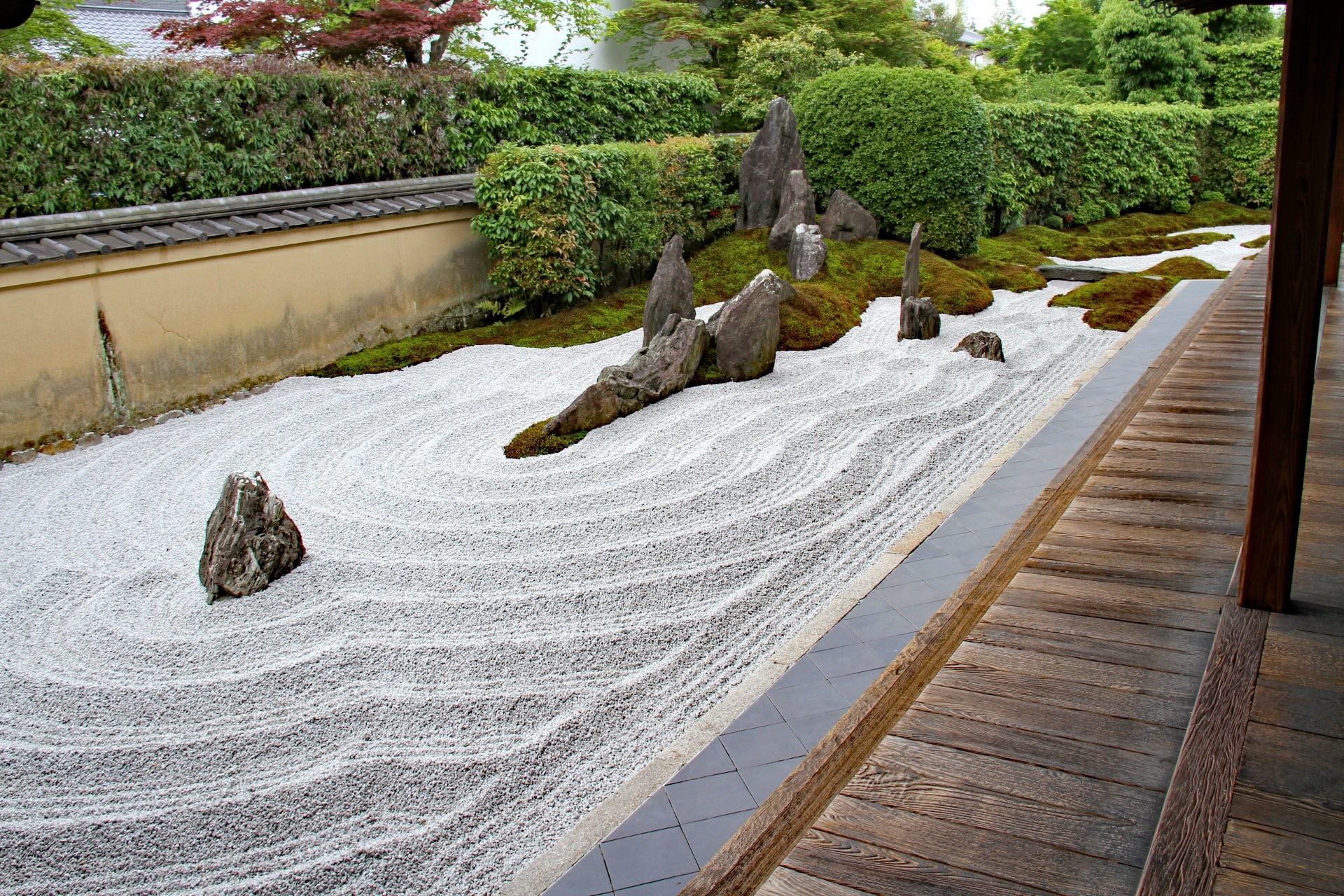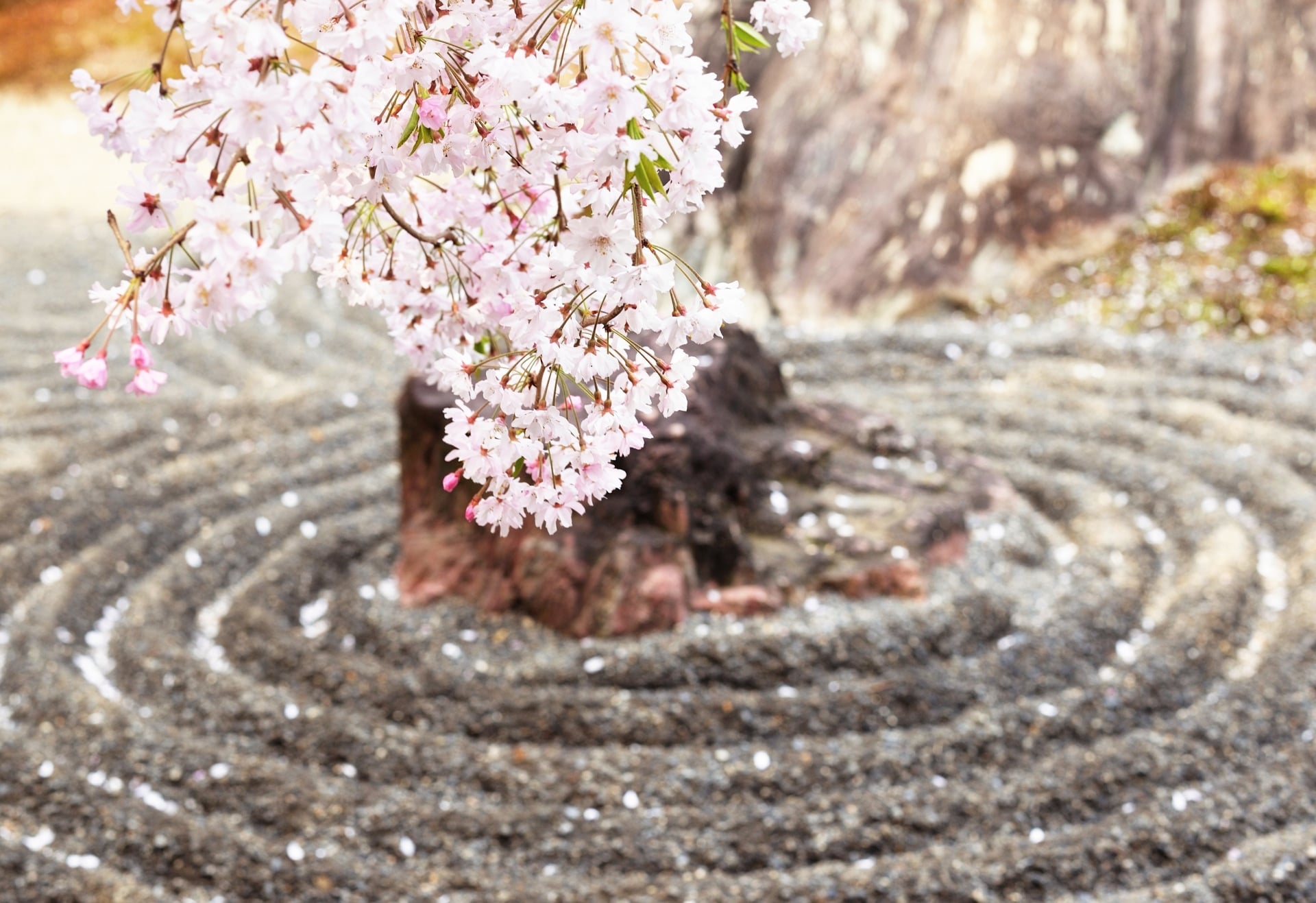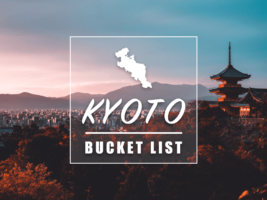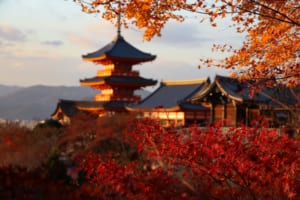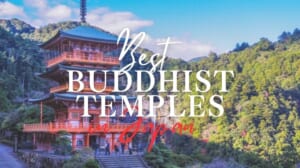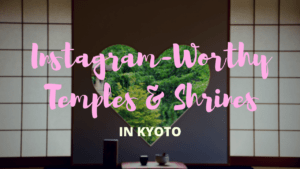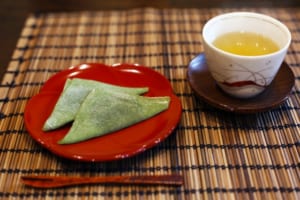8 Best Zen Gardens in Kyoto
Best Temples with a Traditional Zen Garden in Kyoto
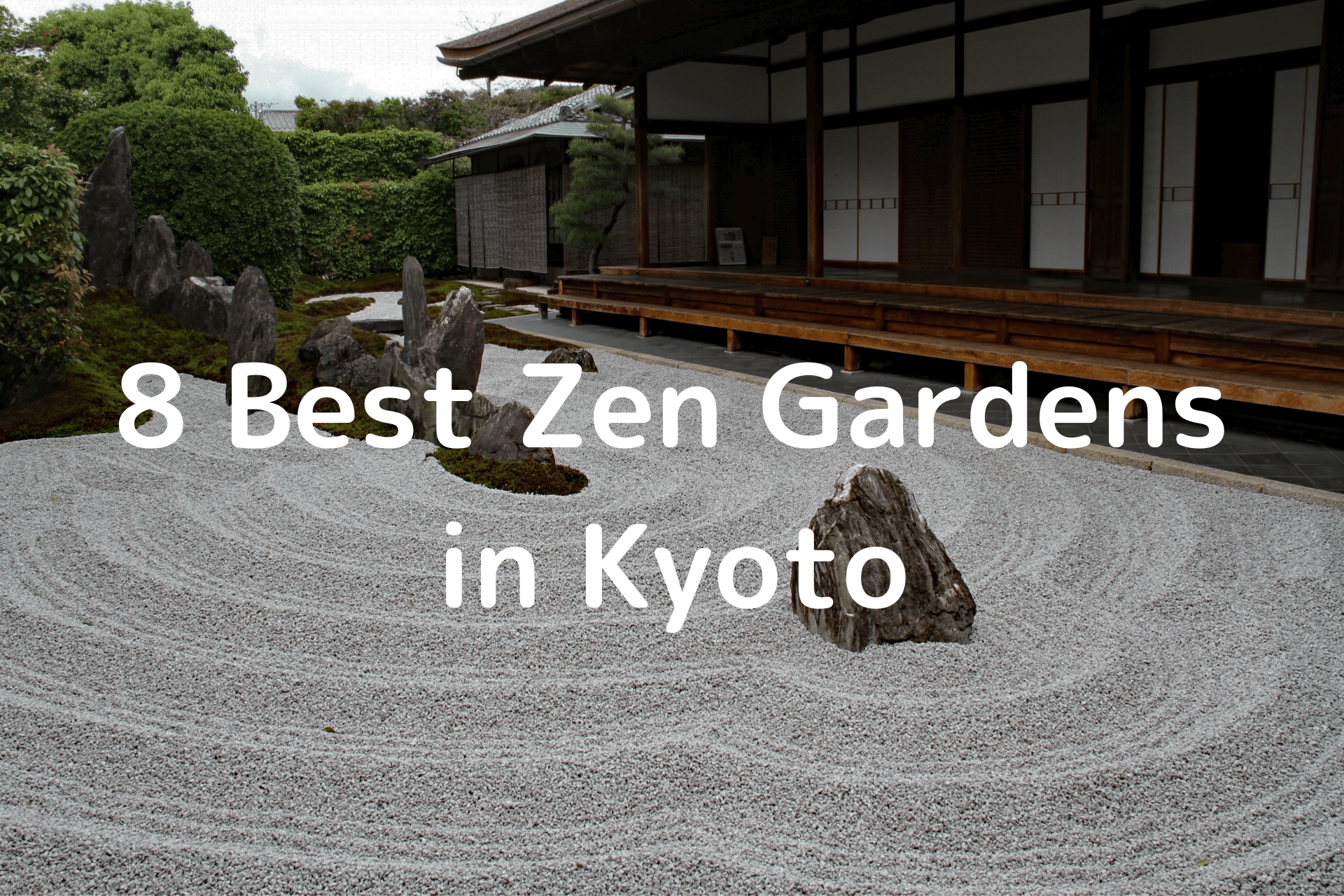
Kyoto is one of the most visited cities in Japan in which there are many historical sites to visit where you can enjoy the Japanese traditional culture. When you do some research about Kyoto’s popular places to visit, temples and shrines will definitely come up. Some of them have zen gardens inside a temple.
Zen gardens are very unique-looking gardens for many people from around the world. They look very simple as they don’t have many plants in them. They mainly consist of many pebbles and some stones. Sounds very monotonic and boring? People that visit these gardens often say it was very calming, relaxing, and refined, and they were able to feel something very special and different about them.
Why don’t you check out zen gardens in Kyoto to see and feel that for yourself? In this article, we will be introducing to you the 8 best zen gardens in Kyoto.
What is a Zen Garden
First of all, we would like to roughly explain what Zen gardens are. Zen gardens, also known as karesansui (枯山水), are a little different from ordinary Japanese gardens.
Japanese gardens are commonly centered around a pond and mainly consist of natural materials such as streams, islands, and hills, whereas in zen gardens, you will see gravel, and sand, along with moss and shrubs, however, do not contain water. These zen gardens, as known as “dry gardens”, were at their peak in the “Muromachi period” (1393-1465) which is around 600 years from now. When you visit a zen garden, you would probably feel as if you time traveled to the Muromachi period, as well as inside a temple, and might be able to become a zen master!
Here, we will be listing some of the 8 best zen gardens in Kyoto.
1. Ryoanji Temple
In 1994, UNESCO registered Ryoan-ji temple (龍安寺) as World Cultural Heritage Site. The garden is said to be built in 1499, but the question of when and who actually built this is remaining unknown. In 1975, Queen Elizabeth II of England visited this garden, gave it a rave review, and the garden became widely known.
Ryoan-ji temple has not only a zen garden but a traditional Japanese garden where you can enjoy seasonal flowers and other plants. The contrasts between the two very different-looking gardens attract many people.
The opening hours for Ryoanji Temple depend on the season. From March to November, the temple is open from 8 a.m. to 5 p.m. every day. From December to February, the temple is open from 8:30 a.m. to 4:30 p.m. every day. Admission to the temple is just 500 yen for adults and 300 yen for children under 15. Tickets can be purchased right at the temple. Please check the official website before you visit where they offer an English version.
For more information, check out the following article.
2. Tofukuji Temple

Opening hours differ from season to season. From April to October, the temple is open from 9:00 am to 4:30 pm. From November to December, it is 8:30 am to 4:30 pm. From early December to March, it is 9:00 am to 4:00 pm. Admission ends 30 minutes before closing time. The Admission fees are 600 yen for entering Tsutenkyo Bridge and Kaisando Hall, 500 yen for Hojo and gardens, and 1,000 yen for everything.
For more information, check out the following article.
3. Kenninji Temple
The concept of this garden is scenery in Hyakujousan, which is a mountain in China. Kenninji temple (建仁寺) has three gardens; Chou-on-tei (潮音庭), Dai-ou-en (大雄苑), and Circle-Triangle-Square garden (○△□乃庭). Chou-on tei can be enjoyed from all four angles. Dai-ou-en was built in 1940 by Kumakichi Kato (加藤熊吉), who was a famous landscape architect. last but not least, the Circle-Triangle-Square garden represents three elements of nature. The circle represents water, the square for ground, and the triangle for fire.
Opening hours are 10:00 am to 5:00 pm, but please enter before 4:30 pm. After that, it cannot be entered. Admission fees will be 600 yen for adults over 18. From 13 to under 18 years old is 300 yen. Children from 6 to 12 years old are 300 yen. Children under 5 years old are free.
Recommended activity:
Special Tour of Kennin-ji with Cake and Matcha Tea Time
▶ Kenninji Temple official website: https://www.kenninji.jp/
4. Enkoji Temple
The temple is famous for its autumn colors which are usually best in late November. In its courtyard, Enkoji temple (圓光寺) has a beautiful garden with a pond and many maple trees. It provides lovely views of greenery in summer and stunning fall colors in autumn.
The zen garden here is one of a “Karesansui” dry garden as well. This garden is called “Honryutei” and it was built in 2013 so it is fairly new. The swirl of white pebbles represents a sea of clouds. Some of the stones are the representation of lightning and the other stones are made to look like a dragon going up in the sky. The size of this garden may be small but the design makes it very dramatic and dynamic. A fun fact about this garden is that it is still unfinished. The message is that the garden will be completed in our hearts.
Opening hours are 9:00 am to 5:00 pm. The admission fees]are 500 yen for adults, for those who are from 13 to 17 years old are 400 yen, For children from 6 to 12 years old, it is 300 yen.
For more information, check out the following article.
5. Manshuin Monzeki Temple
Manshuin Monzeki Temple (曼殊院門跡) was founded by Dengyo Daishi in the 8th century. Now the temple is notable both for its buildings and a fine garden. The gardens of the Manshuin are a nationally designated Place of Scenic Beauty.
The style of the zen garden of this temple is also “Karesansui” dry garden style. All the pebbles are representations of a stream of water. there are two small islands on the pebbles which are called “Tsurujima island” and “Kamejima islands”. Also, the building itself represents a small boat floating on the water. The 400 years old pine tree on Tsurujima portrays “tsuru” which is a crane. Right beside the pine tree, there is a Manshuin-style Christian lantern.
Opening hours are 9:00 am to 5:00 pm. The admission will be closed at 4:30 pm. The admission fees are 600 yen for adults, People from 15 to 17 years old are 500 yen, and children under 15 are 400 yen.
▶ Manshuin Monzeki Temple official website (Japanese only): https://www.manshuinmonzeki.jp/
6. Konchiin Temple
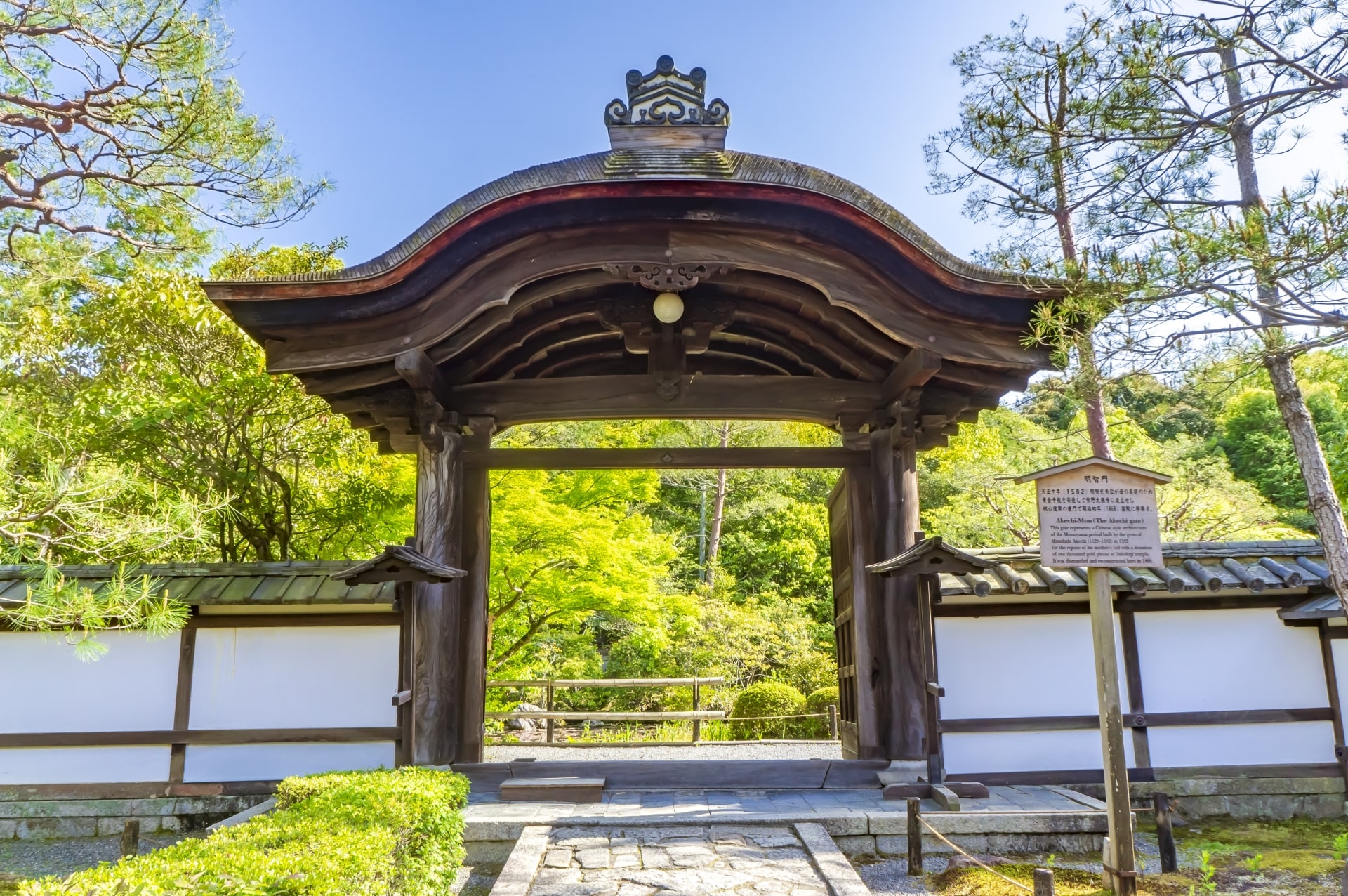
We will be listing three main gardens. Two out of three are zen gardens (Hojo teien (方丈庭園) and Kohojo teien (小方丈庭園)) and the other is a Japanese garden, Rokudo-tei garden (六道庭). Hojo teien is said to have been built by Enshu Kobori (小堀遠州) and it is one of the most famous gardens built in the early Edo period, which is around 400 years ago. Ko Hojo teien was built in 1966.
From March to November, it is open from 9:00 am to 5:00 pm. From December to February, it closes at 4:30 pm.
For more information about Nanzenji temple, check out the following article.
7. Daitokuji Temple (Zuihoin)
Daitokuji Temple (大徳寺) was said to be built in 1535, during the Muromachi era. it is one of the oldest gardens you will come across in Kyoto. It was founded by daimyo Otomo, who was one of the early Christians in Japan. Garden designer Shigemori Mirei, who created the gardens in 1961, included a Garden of the Cross and even a statue of the Virgin Mary in reference to the founder.
The garden is less than 100 ㎡ which is on the smaller side compared to other zen gardens. However, you wouldn’t feel like it is small. The garden architect’s technique makes the garden very profound and deep.
Opening hours are from 9:00 am to 5:00 pm. The admission fee is 400 yen for adults and 300 yen for children.
8. Taizoin Temple
There are two main gardens in Taizoin Temple (退蔵院): Hojo teien (方丈庭園) and Yoko-en (余香苑). Hojo teien was definitely here in 1602, but the history before that remains unknown. Yoko-en was built in 1963-1965 by Japanese garden architect, Kinsaku Nakane (中根金作).
Many plants and trees are seen in These gardens where you can enjoy the seasonal flowers and sceneries. Opens from 9:00 am and admission will be closed at 5:00 pm. Adults over 15 will be 600 yen. Children under 15 will be 300 yen but children under 6 will not be charged.
Official English website is available for more information, such as English guidance for groups of more than 10 people.
Recommended activity:
▶ Taizoin Temple official website: http://www.taizoin.com/en/
How did you like this article? Have you decided which zen gardens in Kyoto you would like to visit? Some temples have tea houses where you can drink matcha tea or even experience zazen (zen meditation), so please research for further information so that you can enjoy the zen experience more!
Also, please consider not just enjoying the garden by looking at it but actually experiencing zen for yourself. Getting to know the culture of zen cannot be done other than here in Japan. Experiencing this beautiful Japanese zen culture might be one of the most precious experiences for you.
▽Subscribe to our free news magazine!▽
For more information about traveling in Japan, check these articles below, too!
▽Related Articles▽
▼Editor’s Picks▼
Written by





